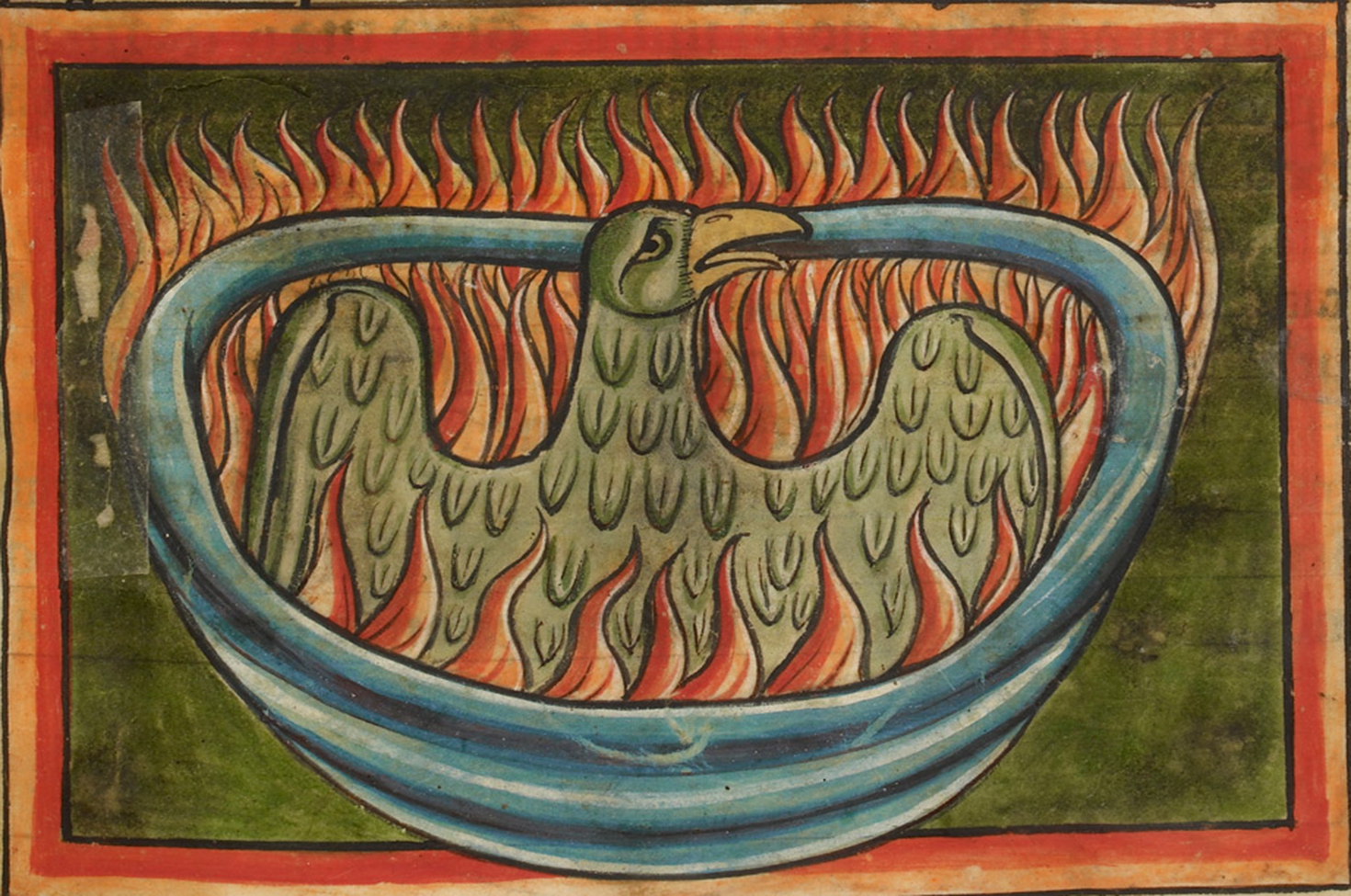
A bestiary with additions from Gerald of Wales’ Topographia Hibernica, c. 1200. British Library.
• The British Library and the Bibliothèque nationale de France have put eight hundred illuminated manuscripts online: “We hope to transform awareness of this period of close political and cultural entwinement between our two countries, when scribes moved between England, France, and Normandy, working in Latin, French, and English on manuscripts of unparalleled beauty and sophistication.” (Aleteia)
• Where stereotypes about women journalists were born: “Women reporters are unreliable, inattentive to detail, and have an embarrassing lack of restraint. In the world of journalism, he wrote, there were ‘…not two sexes, but two species—journalists and women-journalists—and that the one is about as far removed organically from the other as a dog from a cat.’ ” (Pictorial)
• Don’t buy a glass casket. (Collectors Weekly)
• The history of black farmworkers who moved to California in the 1930s: “We paid our dues far as laborin’ hard in the fields. And believe me, I don’t wanna do it. Whoever wanna do it, I just pray for ’em.” (KQED)
• On minstrelsy: “Their music is an act of reclamation. The banjo, after all, is an African instrument, and the original minstrel songs—some of which, like ‘Oh! Susannah,’ remain American standards—were a blend of European and slave traditions. As the nineteenth century progressed, the style effectively became America’s first pop music.” (Time)
• A movie that actually gets into the history of Green Books: “The Green Book was first published in 1936 by Victor Green. He was a postal worker, and he has a Jewish friend who had a book that listed places in the Catskills where Jewish people could go to. And Green says, ‘This would be great for black people—we need a book like this.’ ” (Vox)
• It is easy to find people reading in art. (Hyperallergic)
• Construction workers in Lake George, NY, were just trying to build a house, but instead they found a Revolutionary War burial ground. (The New York Times)
• This week in obituaries: Mark Hollis, a mathematician, a curator of contemporary African art, an expert in Japanese literature, “an archivist of human absurdity,” and a whistleblower who tried to stop the Tuskegee syphilis study.